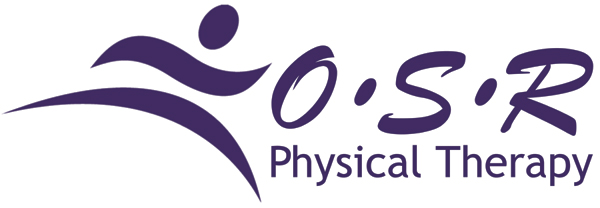How should you select a running shoe? Here at OSR, we treat lots of runners of all different levels, so this is a question we here quite often.
There are many factors that go into running shoe selection:
1. Does your shoe match your current muscle strengths and imbalances? (Yes, we all have muscle imbalances!)
2. Does your shoe match the kind of activity you wish to perform? For example running sprints versus playing tennis are very different uses for running shoes.
3. Does your shoe match your running technique? For example, a Newton is a forefoot striker shoe. If you are a hindfoot striker, the shoe won't automatically make you a safe and effective forefoot striker.
4. What was your last shoe? Sometimes changing types of shoes can be very beneficial. However, changing from an over-pronation shoe to a minimalist shoe is too many levels of change in support at once. This can be a factor in contributing to injury.
5. Do you have an injury or nagging pain? While changing shoes may be part of the answer, your running technique, training schedule, and muscle imbalances all play into safe and effective running. Changing the shoe alone is unlikely to resolve your pain in most cases.
You can read about more factors, as recommended by the American College of Sports Medicine via this link.
OSR Physical Therapy offers running analysis for both patients and non-patients. We also have an Anti-gravity treadmill both for rehab and public use. You can read more about it here.
This article was written by Meredith Butulis, DPT, CIMT, ACSM HFS, located at our Eden Prairie office.
Saturday, November 30, 2013
Monday, November 11, 2013
Review of Mayo Sports Medicine Symposium
I recently attended the Mayo Clinics' Sports Medicine Symposium. This was a 2 day course touching on a variety of topics. There was increased emphasis on the foot and ankle. Some of the speakers that highlighted this conference were Bryan C. Heiderscheit, P.T., Ph.D from UW-Madison, Gerard A. Malanga, M.D., the founder of New Jersey Sports Medicine, LLC and New Jersey Regenerative Institute, and Kaylan Q. Groen, A.T.R., A.T.C., a previous employee here at OSR. (By the way Kaylan says hi).
Dr. Heiderscheit presented on 2 topics, running injuries and hamstring injuries. He actually will not stretch any of his patients who suffer hamstring strains throughout their entire time with him. I thought this was very interesting. He also talked about the advantages of shortening your stride while running can have for knee pain.
Kaylan is currently working at an Athletic Trainer for Mayo and has been performing research on what running shoes people should be selecting based on their foot type and gait mechanics. So far the research had proved little on what shoe people should wear to prevent injuries. Her current recommendations are to pick a shoe that is comfortable and a shoe that is made for your running style; forefoot, midfoot, rearfoot. If you are unsure about your running style don't be afraid to stop in and have us take a look.
Dr. Malanga talked about PRP "platelet rich plasma" injections and about his views on low back pain. Malanga is very excited about the current research coming out on PRP. He thinks that in the near future we will see that PRP will become more common. While talking about low back pain, Malanga, showed novel ideas for rehabilitation and discussed a comprehensive approach to treating the pain. Many of his talking points we are already doing at OSR! There were many other presenters and I can say I learned a great deal from this conference.
This article was written by Andrew Ernst, ATR at our Eden Prairie location.
Dr. Heiderscheit presented on 2 topics, running injuries and hamstring injuries. He actually will not stretch any of his patients who suffer hamstring strains throughout their entire time with him. I thought this was very interesting. He also talked about the advantages of shortening your stride while running can have for knee pain.
Kaylan is currently working at an Athletic Trainer for Mayo and has been performing research on what running shoes people should be selecting based on their foot type and gait mechanics. So far the research had proved little on what shoe people should wear to prevent injuries. Her current recommendations are to pick a shoe that is comfortable and a shoe that is made for your running style; forefoot, midfoot, rearfoot. If you are unsure about your running style don't be afraid to stop in and have us take a look.
Dr. Malanga talked about PRP "platelet rich plasma" injections and about his views on low back pain. Malanga is very excited about the current research coming out on PRP. He thinks that in the near future we will see that PRP will become more common. While talking about low back pain, Malanga, showed novel ideas for rehabilitation and discussed a comprehensive approach to treating the pain. Many of his talking points we are already doing at OSR! There were many other presenters and I can say I learned a great deal from this conference.
This article was written by Andrew Ernst, ATR at our Eden Prairie location.
Saturday, November 9, 2013
New ligament in the knee discovered
Where's the anterolateral ligament? Strangely, most people have one, but it wasn't named or described as having a different function until now!
This ligament is thought to have a major role in protective function of the ACL, which is a ligament commonly injured in contact sports. The current implications in training and rehab have not yet been researched. You can read more about this discovery here.
This ligament is thought to have a major role in protective function of the ACL, which is a ligament commonly injured in contact sports. The current implications in training and rehab have not yet been researched. You can read more about this discovery here.
Subscribe to:
Posts (Atom)


